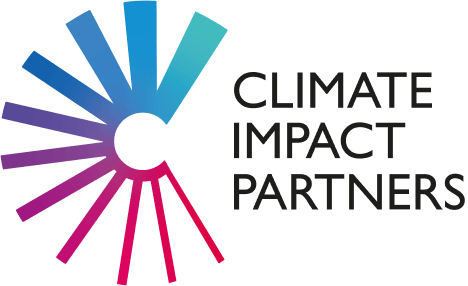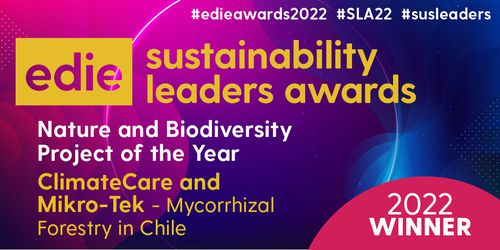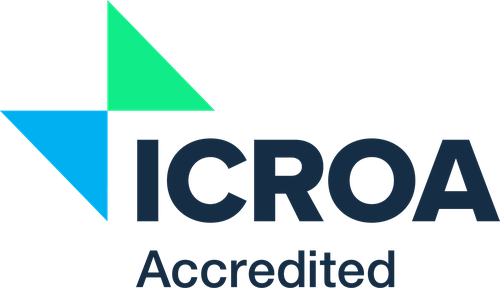Drawn to the climate space by the sheer scale and pressing urgency of the issue, there has been a rapid rise in organizations offering solutions that aim to materially improve the impact of our responses through technologies such as distributed ledgers (aka blockchain), tokenization, and carbon credit-backed cryptocurrencies.
These Web 3.0-enabled applications offer solutions to recognized pinch-points in and across carbon markets – enabling greater efficiencies when putting climate finance to work; improving transparency and quality of data in monitoring, reporting and verifying (MRV) outcomes; and, attracting and scaling finance for mitigation and adaptation measures.
Mind the gap
Azeem Azhar, curator of the Exponential View newsletter and author of Exponential argues that ours is the first era in human history in which technology is accelerating exponentially.
The catch is that human society processes and absorbs innovation at a slower, incremental rate. The result, he contends, is an exponential gap between the power of new technology, and our ability to keep up. That is opening a gap between established businesses and fast-growing digital platforms.
There is enormous and welcome power in the application of Web 3.0 technologies in the response to climate change. However, we need to mind the gap – there are areas where we need to be mindful of the potential pitfalls as we seek to combine the best of our past experience and knowledge with the promise of Web 3.0.
The tech-hikers guide to the climate universe
It has been our experience that navigating the tech space is difficult without a clear understanding of the key components of Web 3.0 and how they ‘attach’ to climate action. Web 3.0 here refers to an information architecture characterized by decentralization, connectivity, and the use of artificial intelligence (AI).
With that in mind, here’s an introduction to the three components most relevant in the climate space. The role of AI in scaling carbon markets will be explored in a future blog post.
Distributed Ledger
A distributed ledger refers to a form of database architecture, whereby the record of all transactions is held by multiple parties, rather than a centralized record-keeper.
Blockchain is a particular type of distributed ledger, whereby these records are further organized into discrete, immutable chunks (blocks). This distributed architecture and immutability are the key reasons why such technology can play a much expanded role in scaling the impact of carbon markets.
Blockchain technology can significantly lower the transaction costs involved in the Measurement, Reporting and Verification (MRV) of carbon projects, allowing projects that issue carbon credits to speed up the issuance cycle, which currently may only happen every two or three years, and increase liquidity across carbon markets.
The decentralization of blockchain will increase transparency, as all issuances and transactions of credits can be tracked by all participants, lowering the risk of double-counting, and providing an efficient interface between projects creating carbon credits and over the counter (OTC) markets and exchanges through which the credits are transacted.
Tokenization
Tokenization refers to the encoding of key elements of an asset (in this context, a carbon credit) in a format (a ‘token’) that is compatible with the blockchain.
For example, an on-chain carbon token can represent one carbon credit in the registry of the carbon standard that validated the project and verified its carbon credit issuance. A carbon token therefore embodies all fundamental attributes of carbon credits: real, additional, permanent, robustly quantified, independently verified, and uniquely claimed.
Tokenization can increase transparency, accounting robustness, and improve market liquidity by enabling the credits to be traded efficiently and transparently within and across various markets – from OTC marketplaces, to auctions, to exchanges.
Cryptocurrencies
Cryptocurrencies use blockchain-enabled tokens to replicate the functions of traditional currencies i.e., to serve as a medium of exchange, a store of value, and a unit of account. They are often created and managed by Decentralized Autonomous Organizations (DAOs) - member-owned communities, without centralized leadership, represented by rules encoded as a computer program that is transparent and controlled by its members. Members of DAOs that operate carbon cryptocurrencies can be diverse – from people and entities that are committed to funding climate action, to investors looking for excitement and novelty.
Carbon credits are the underlying asset of a carbon cryptocurrency. However, they are not a reliable store of financial value as their price is influenced by our collective ambition to take meaningful action on climate.
A well-governed and well-managed carbon market works best when prices rise gradually and steadily. It is probable that DAOs managing carbon cryptocurrencies will add to the volatility of carbon prices as they adjust their treasury holdings in response to market forces, and therefore disrupt the market and its underlying goal – to deliver meaningful climate action.
Bridging the gap
The potential for Web 3.0 technologies to scale carbon markets is hugely exciting through technologies such as distributed ledgers and tokenization. These technologies will bring additional security for transactions, robust accounting auditability, cost efficiency, transparency, and automation of important MRV functions.
We are convinced this will help to scale carbon markets and increase their liquidity. Carbon cryptocurrencies, however, may not serve the primary purpose of carbon markets well so we will continue to keep their application and impact under review.
In order to further foster Web 3.0 technologies, we are focusing on the areas where it builds on the foundations of the carbon markets to deliver deeper, faster, and more resilient impact on climate. We are working on a number of initiatives to accelerate their deployment- both at the carbon project and carbon market levels.
Aktuelle News

UK Government Launches Voluntary Carbon and Nature Markets Consultation
Climate Impact Partners comments on the launch of the UK Government's consultation on raising integrity in Voluntary Carbon and Nature Markets.
Weiterlesen
Groundbreaking AI platform launched to deliver real-time, personalised climate policy insights to corporates
Supported by Climate Impact Partners and with investor funding, Maiven, a new AI platform, provides personalised, real-time climate policy insights.
Weiterlesen
Climate Impact Partners Comments on SBTi's Corporate Net-Zero Standard V2
Climate Impact Partners' CEO, Sheri Hickok, shares views on SBTi's draft Corporate Net-Zero Standard V2, now open for consultation.
WeiterlesenDie neuesten Insights von
Climate Impact Partners

Buying Smart: How to Avoid the Carbon Credit Crunch
As carbon markets evolve, demand for high-integrity credits is set to outpace supply as early as 2030—with some buyers already feeling the squeeze.
Weiterlesen
SBTi Net Zero Draft V2.0: Your Key Questions Answered
Climate Impact Partners experts answer key questions on the SBTi's draft Corporate Net Zero Standard V2.0.
Weiterlesen
Navigating the SBTi's Proposed Net-Zero Revisions: Implications for Carbon Credits, Removals, and BVCM
An overview of the key updates from the SBTi’s proposed Corporate Net Zero Standard (V2.0) and implications for carbon credits.
Weiterlesen











